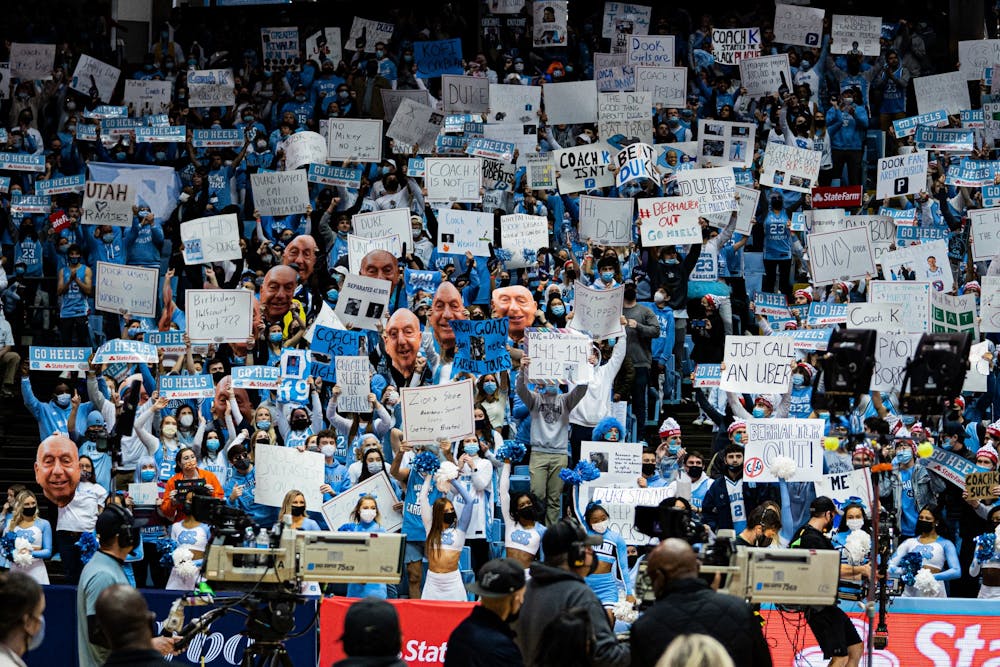In the 1960s, the rivalry became personal during a series of recruiting wars.
Both teams recruited players from New York, and the recruitment battle reached its height because of one person: highly-touted recruit Art Heyman.
During his visit to Chapel Hill, Heyman’s stepfather commented on then-UNC head coach Frank McGuire’s factory-like style of coaching. As a result, Heyman “had to keep the two men from throwing punches at each other,” according to a 1995 edition of Sports Illustrated.
So, when then-Duke head coach Vic Bubas picked up Heyman from the Raleigh-Durham airport on his way to UNC, the commit found a new home nine miles away.
During his sophomore season in 1961, Heyman learned that the Tar Heels – made up of New Yorkers who were once his friends – did not take kindly to his change of heart. Then-sophomore Larry Brown, who was supposed to be his roommate in Chapel Hill, punched Heyman, leading to a full-on fight that took 10 policemen to break up. Although the case was later dismissed, Heyman was charged with assault and battery by UNC members after the game.
“It was like a 10 minute brawl,” North Carolina history professor Matthew Andrews said. “That seems to be when the rivalry was ratcheted up and taken to another level.”
In the next regular season matchup, guardrails and chains were placed in front of bleachers in Woollen Gymnasium.
Before the 1960s, the rivalry seemed to be about education. The 1961 season helped escalate the feud by turning it into a physical battle where the winner gets the last laugh. However, the rivalry needed one more starring role.
Mike Krzyzewski.
Coach K’s entrance
Kiger said Krzyzewski was "cut from a different cloth." After becoming the head coach in 1980, Krzyzewski became intent on “elbowing [his] way in” to the area, where the UNC-NC State rivalry ran supreme.
By 1984, he did just that.
To get the day's news and headlines in your inbox each morning, sign up for our email newsletters.
During the first UNC-Duke game of the year, Smith wanted a substitution a little over four minutes into the game. To stop the clock, the head coach banged on the scorer’s table and accidentally added 20 points to UNC’s score. Smith was not given a technical.
After the game, Krzyzewski ranted about the differences between the two programs.
“Coach K repeatedly, publicly and privately, said that there was a double standard in the Atlantic Coast Conference,” Kiger said. “Smith gets calls. It’s his official. Smith gets his way.”
In that moment, Krzyzewski added a new element to the rivalry: coach versus coach. His desire to turn Duke into one of the best programs helped make UNC-Duke the rivalry it is today.
Although both teams have new coaches at the helm, each of these eras adds a component to the modern rivalry. Even as the two teams prepare for their 261st game against one another, three things are constant when the teams square off, Kiger said.
“Time stands still,” he said. “The universe slows down. Our collective hearts beat to the pulse of a leather round ball for two hours.”
@_emmahmoon
@dthsports | sports@dailytarheel.com
Emma MoonEmma Moon is the 2024-25 assistant sports editor. She previously served as the Summer Sports Editor and as a senior writer. Emma is a senior majoring in Media and Journalism, and English. She has red hair and drives a Prius.



